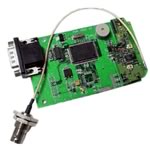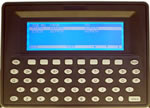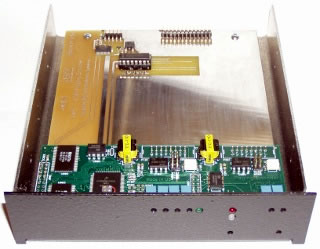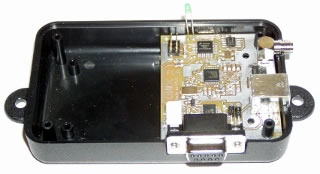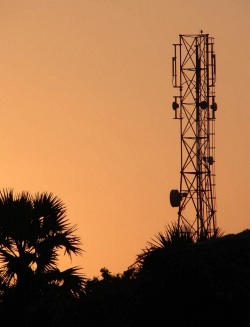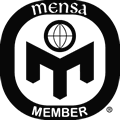BloostonLaw Telecom Update Published by the Law Offices of Blooston, Mordkofsky, Dickens, Duffy & Prendergast, LLP [Portions reproduced here with the firm's permission.] www.bloostonlaw.com |
| Vol. 14, No. 11 | March 16, 2011 |

Schedule Set for USF/ICC Reform Meetings The FCC has established a schedule for when staff will be available for ex parte meetings regarding the Commission’s Notice of Proposed Rulemaking (NPRM) and Further NPRM seeking comment on proposals to fundamentally reform the Universal Service Fund (USF) and intercarrier compensation (ICC) system. Such meetings will be held March 21 through April 1. As noted previously, comments on Section XV of the USF/ICC Transformation NPRM (“Reducing Inefficiencies and Waste By Curbing Arbitrage Opportunities”) are due on April 1, 2011, and reply comments are due on April 18, 2011 (BloostonLaw Telecom Update, March 2). Comments on the remaining sections are due on April 18, 2011, and reply comments are due on May 23, 2011. Comments are due for the State Members of the Joint Board on Universal Service on May 2, 2011. Specific filing instructions are detailed in the USF/ICC Transformation NPRM. As described in the USF/ICC Transformation NPRM, this matter shall be treated as a “permit-but-disclose” proceeding in accordance with the Commission’s ex parte rules. Staff from the Wireline Competition Bureau's (WCB’s) Front Office, Telecommunications Access Policy Division, and Pricing Policy Division, as well as staff from the Wireless Telecommunications Bureau (WTB), including the Auctions and Spectrum Analysis Division will be available for meetings regarding parties’ comments March 21, 2011 through April 1, 2011. These meetings will be scheduled for thirty minutes each. We will be glad to assist any client seeking a meeting with the FCC staff. It will be necessary to identify with specificity the issues they plan to address and indicate if they would also like to include staff from any Bureau in addition to WCB or WTB. BloostonLaw contacts: Hal Mordkofsky, Ben Dickens, Gerry Duffy, John Prendergast, and Mary Sisak. |

INSIDE THIS ISSUE - FCC issues Caller ID NPRM to fight “spoofing,” other phone scams & schemes.
- FCC seeks to extend freeze on Part 36 separations.
- RUS seeks comment on broadband loan program, solicits funds.
- FCC announces procedures, deadlines for 700 MHz Auction 92.
- FCC proposes 14.9% USF contribution factor for second quarter.
|
FCC Issues Caller ID NPRM To Fight “Spoofing,” Other Phone Scams & Schemes The FCC has issued a Notice of Proposed Rulemaking (NPRM), seeking comment on proposed rules to implement the Truth in Caller ID Act of 2009, signed into law on December 22, 2010. Caller ID services identify the telephone numbers and sometimes the names associated with incoming calls. Many telephone users—including subscribers to traditional wireline, interconnected Voice over Internet Protocol (VoIP) and mobile wireless services—routinely rely on Caller ID to determine who is calling and whether to answer the call. Increasingly, bad actors are manipulating or “spoofing” caller ID information to facilitate schemes that harm consumers or threaten public safety. Some caller ID spoofers, for example, transmit caller ID information that makes it appear that they are calling from consumers’ banks or credit card companies in an attempt to trick call recipients into providing their account numbers or other sensitive information. In other instances, caller ID spoofers have engaged in a practice referred to as “swatting,” which involves placing false emergency calls to law enforcement agencies to elicit a response from Special Weapons and Tactics (SWAT) teams. The Truth in Caller ID Act is aimed at preventing these harmful and dangerous practices. The Act prohibits intentionally harmful or fraudulent spoofing of caller ID information and gives the FCC the authority to seek substantial penalties from those who violate the Act. The FCC proposes rules that would prohibit any person or entity in the United States, with the intent to defraud, cause harm, or wrongfully obtain anything of value, from knowingly causing, directly or indirectly, any caller identification service to transmit or display misleading or inaccurate caller identification information. The Caller ID Act’s prohibition is directed at spoofing “in connection with any telecommunications service or IP-enabled voice service.” The proposed rules define “caller identification service” and “caller identification information” to encompass both types of calls; therefore, the proposed rules would apply to calls made using both types of services. The FCC seeks comment on this approach, and whether it needs to take any other steps to ensure that calls made using telecommunications services and interconnected VoIP services are covered by the proposed rules. The FCC also seeks comment on the use of the word “knowingly” in the statute and the proposed rules. The statutory language prohibits anyone from “causing any caller identification service to knowingly transmit misleading or inaccurate caller identification information with the intent to defraud, cause harm or wrongfully obtain anything of value” and could be read to require knowledge by either the caller identification service or the actor employing the caller identification service. However, in many instances, the caller identification service has no way of knowing whether or not the caller identification information it receives has been manipulated. The proposed rules thus focus on whether the caller has knowingly manipulated the caller identification information that is seen by the call recipient in order to defraud, cause harm, or wrongfully obtain anything of value. The proposed rules provide that the person or entity prohibited from “knowingly” causing transmission or display of inaccurate or misleading caller identification is the same person or entity that must be acting with intent to defraud, cause harm, or wrongfully obtain anything of value. The proposed rules address both transmitting and displaying inaccurate caller identification information to make clear that, even if a carrier or interconnected VoIP provider transmits accurate caller identification information, it would be a violation for a person or entity to cause a device to display inaccurate or misleading information with the intent to defraud, cause harm, or wrongfully obtain anything of value. The FCC seeks comment on whether these proposed rules accurately reflect Congress’ intent. Are there any changes to the proposed rules that would improve how this prohibition is expressed? The FCC also seeks comment on whether the proposed prohibition on causing any caller identification service to transmit or display “misleading or inaccurate” caller identification information with the “intent to defraud, cause harm, or wrongfully obtain anything of value” provides sufficiently clear guidance about what actions are prohibited. Do the proposed rules provide the public with “ascertainable certainty” about what would constitute a violation of the Act? Are the terms used in the proposed rules sufficiently well understood concepts that the public reasonably should know which actions are prohibited? For example, must the legal elements of common law “fraud” be met for a finding of intent to “defraud” under the Commission’s proposed rules? Are there other statutes that provide relevant and well-defined standards for what it means to “defraud” someone? To the extent that greater specification is desirable, how should the proposed rules be changed to provide the desired clarity while remaining faithful to Congress’ intent? The FCC also seeks comment on the different methods that a person or entity can employ to cause a caller identification service to transmit misleading or inaccurate information, and whether our proposed rules adequately encompass all such methods. For our clients’ purposes: If a carrier actually offers Caller ID spoofing services, it is setting itself up for reporting requirements and possible sanctions to be adopted under the proposed rules. The FCC may also impose a requirement that the spoofing service customer’s identity be verified by the provider so that it can better prevent illegal acts. The FCC poses the question of whether carriers or interconnected VoIP providers should be exempted from the proposed spoofing rules. This would provide further protection to carriers against liability from spoofers using their networks. The FCC also asks if carriers/interconnected VoIP providers can prevent spoofers from overriding a calling party’s privacy choice. This would impose a new obligation on carriers, and new exposure to sanctions. Our clients should comment on these issues. Our clients should also make sure that their contract with customers adequately protects them against claims related to spoofing and other acts by third parties in violation of law or FCC regulations. Comments in this WC Docket No. 11-39 proceeding are due April 18, and replies are due May 3. BloostonLaw contacts: Ben Dickens, Gerry Duffy, and Mary Sisak. FCC Seeks To Extend Freeze On Part 36 Separations The FCC has established a comment cycle for its Notice of Proposed Rulemaking (NPRM), seeking comment on extending the current freeze of Part 36 category relationships and jurisdictional cost allocation factors used in jurisdictional separations until June 30, 2012. The current freeze would expire on June 30 of this year. According to the FCC, extending the freeze will allow the Commission to provide stability for, and avoid imposing undue burdens on, carriers that must comply with the Commission's separations rules while the Commission considers issues relating to comprehensive separations reform. Comments in this CC Docket No. 80-286 proceeding are due March 28, and replies are due April 4. Jurisdictional separations is the process by which incumbent local exchange carriers (ILECs) apportion regulated costs between the intrastate and interstate jurisdictions. Background: The 2001 Separations Freeze Order froze all part 36 category relationships and allocation factors for price cap carriers and all allocation factors for rate-of-return carriers. Rate-of-return carriers had the option to freeze their category relationships at the outset of the freeze. The freeze was originally established July 1, 2001 for a period of five years, or until the Commission completed separations reform, whichever occurred first. The 2006 Separations Freeze Extension Order extended the freeze for three years or until the Commission completed separations reform, whichever occurred first. The 2009 Separations Freeze Extension Order extended the freeze until June 30, 2010, and the 2010 Separations Freeze Extension Order extended the freeze until June 30, 2011. NPRM: In this NPRM the Commission seeks comment on extending the freeze for one year, until June 30, 2012. The proposed extension would allow the Commission to continue to work with the Federal-State Joint Board on Separations to achieve comprehensive separations reform. Pending comprehensive reform, the Commission tentatively concludes that the existing freeze should be extended on an interim basis to avoid the imposition of undue administrative burdens on incumbent LECs. The Commission asks commenters to consider how costly and burdensome an extension of the freeze, or a reversion to the pre-freeze part 36 rules, would be for small incumbent LECs, and whether an extension would disproportionately affect specific types of carriers or rate-payers. Incumbent LECs have not been required to utilize the programs and expertise necessary to prepare separations information since the inception of the freeze almost nine years ago. If the Commission does not extend the separations freeze, and instead allows the earlier separations rules to return to force, incumbent LECs would be required to reinstitute their separations processes. Given the imminent expiration of the current separations freeze, it is unlikely that incumbent LECs would have sufficient time to reinstitute the separations processes necessary to comply with the earlier separations rules. The extended freeze would be implemented as described in the 2001 Separations Freeze Order. Specifically, price-cap carriers would use the same relationships between categories of investment and expenses within part 32 accounts and the same jurisdictional allocation factors that have been in place since the inception of the current freeze on July 1, 2001. Rate-of-return carriers would use the same frozen jurisdictional allocation factors, and would use the same frozen category relationships if they had opted previously to freeze those as well. BloostonLaw contacts: Ben Dickens, Gerry Duffy, and Mary Sisak. RUS Seeks Comment On Broadband Loan Program, Solicits Applications for Funds The Rural Utilities Service (RUS) is seeking comment on amending its regulation for the Rural Broadband Access Loan and Loan Guarantee Program. Since the Broadband Loan Program's inception in 2002, RUS said, the Agency has faced and continues to face significant challenges in delivering the program due to the following factors: The competitive nature of the broadband market in certain geographic areas; the significant number of companies proposing to offer broadband service that are startup organizations with limited resources; continually evolving technology; and economic factors such as the higher cost of serving rural communities. In addition, RUS said, the Office of Inspector General, in a 2005 report, made recommendations to improve program efficiency. For these reasons and in an effort to improve program operation, RUS published proposed changes to the program's regulation in the Federal Register on May 11, 2007. While the Agency was reviewing public comments and revising the rule, the Food, Conservation, and Energy Act of 2008 (2008 Farm Bill) was enacted and changed the statute under which the program operates. In accordance with the statute and taking into account the public comments received regarding the proposed rule to the extent possible, this interim rule presents the regulations that will govern the program until a final rule is published. The Agency is seeking comments regarding this interim rule to guide its efforts in drafting the final rule for the Broadband Loan Program. This interim rule became effective March 14, and comments in this Docket No. RUS-06-Agency-0052 proceeding are due May 13. RUS provides investment capital for deployment of rural telecommunications infrastructure. Financial assistance is provided to rural utilities; municipalities; commercial corporations; limited liability companies; public utility districts; Indian tribes; and cooperative, nonprofit, limited-dividend, or mutual associations. In order to achieve the goal of increasing economic opportunity in rural America, the Agency finances infrastructure that enables access to a seamless, nationwide telecommunications network. With access to the same advanced telecommunications networks as its urban counterparts, especially broadband networks designed to accommodate distance learning, telework, and telemedicine, it is expected that rural America will eventually see improving educational opportunities, health care, economies, safety and security, and ultimately higher employment. RUS said it shares the assessment of Congress, State and local officials, industry representatives, and rural residents that broadband service is a critical component to the future of rural America. The Agency said it is committed to ensuring that rural America will have access to affordable, reliable, broadband services and to provide a healthy, safe, and prosperous place to live and work. On May 13, 2002, the Farm Security and Rural Investment Act of 2002, Public Law 107-171 (2002 Farm Bill) was signed into law. The 2002 Farm Bill amended the Rural Electrification Act of 1936 to include Title VI, the Rural Broadband Access Loan and Loan Guarantee Program, to be administered by the Agency. Title VI authorized the Agency to approve loans and loan guarantees for the costs of construction, improvement, and acquisition of facilities and equipment for broadband service in eligible rural communities. Under the 2002 Farm Bill, the Agency was directed to promulgate regulations without public comment. Implementing the program required a different lending approach for the Agency than it employed in its earlier telephone program because of the unregulated, highly competitive, and technologically diverse nature of the broadband market. Those regulations were published on January 30, 2003. In an attempt to enhance the Broadband Loan Program and to acknowledge growing criticism of funding competitive areas, the Agency proposed to amend the program's regulations on May 11, 2007, to make eligibility of certain service areas more restrictive than set out in the 2002 Farm Bill. In addition to eligibility changes, the proposed rule included, among others, changes to persistent problems the Agency had encountered while implementing the program over the years, especially regarding equity requirements, the market survey, and the legal notice requirements. As the Agency began analysis of the public comments it received on the proposed regulations, the Food, Conservation, and Energy Act of 2008, more commonly known as the 2008 Farm Bill, was working its way through Congress. The proposed rule and key aspects of the public comments were shared with Congress during its deliberations, and the majority of the proposed changes in the proposed rule were incorporated into the legislation, with and without modification. For instance, the proposed rule lowered the equity requirement from 20 percent of the loan value to 10 percent. Congress enacted that change. Other changes the Congress incorporated were several new restrictions not found in the 2002 Farm Bill. These were in response to growing public criticism of federally funded competition. First, funding is restricted in areas that contained 3 or more incumbent service providers, which is defined as serving not less than 5 percent of the proposed service area. Second, a requirement was added that at least 25 percent of the proposed service area not have access to more than one incumbent service provider. And third, for incumbent service providers that were merely upgrading the quality of broadband service in their existing service territory, the prior restrictions on competition would be waived. In response to the growing national debate on what was rural, the 2008 Farm Bill relaxed the restriction to permit urbanized areas that were not adjacent and contiguous to areas with a population of more than 50,000 inhabitants. And lastly, the 2008 Farm Bill incorporated the concept of not requiring market studies for applicants that relied on a penetration rate of less than 20 percent for the loan to be feasible. In the public interest of having a Broadband Program in place to quickly address the needs of the hundreds of applications that were not funded under the Recovery Act, and in light of the fact that the great majority of changes are mandated by the 2008 Farm Bill, or have been proposed in the Agency's prior rule, put out for comment, and subsequently adopted by Congress in the 2008 Farm Bill itself, the Agency is moving forward with certain changes to the Broadband Loan Program by publishing an interim rule. The Agency also believes that this approach is consistent with Congressional intent, given that in section 6110(b) of the 2008 Farm Bill, Congress authorized the Agency to publish these regulations in an interim rule. Notwithstanding the public interest and specific authority previously discussed, the Agency is seeking comment from the public, which will ultimately be incorporated into a final rule. Specifically, the Agency seeks comment on priority of applications, application requirements, the method of determining which applicants could be eligible for 4 percent interest rates, the notice requirement, and processing. In addition, the Agency is seeking comment for future changes to its Broadband Program based on “lessons learned'' from the recently concluded Broadband Initiatives Program under the Recovery Act. The Agency believes that public comment on these issues will help the Agency make future adjustments to the Broadband Program to make it more responsive to the needs of rural America. One lesson that the Agency has already learned to date is that the broadband industry is dynamic and that the Broadband Program will need to continue to evolve to be responsive to the needs of the industry. NOTICE OF SOLICITATION OF APPLICATIONS In conjunction with the interim rule, RUS has announced a Notice of Solicitation of Applications (NOSA). The NOSA announces that RUS is accepting applications for fiscal year (FY) 2011 for the Rural Broadband Access Loan and Loan Guarantee program, subject to the availability of funding. This notice is being issued prior to passage of a final appropriations act to allow potential applicants time to submit proposals and give the Agency time to process applications within the current fiscal year. RUS said it will publish a subsequent notice identifying the amount received in the final appropriations act, if any. At this time, RUS estimates that approximately $700 million may be available for loans from prior appropriations; however, Congress is presently reviewing budget authority across the Federal government in an attempt to reduce government debt. As a result, expenses incurred in developing applications will be at the applicant's own risk. In addition to announcing the application window, RUS announces the minimum and maximum amounts for broadband loans for the fiscal year. Moreover, the Agency is concurrently publishing a interim rule that will revise the current Broadband Program regulations, as necessitated by the Food, Conservation, and Energy Act of 2008 (see above). Applications under this NOSA will be accepted immediately, subject to the requirements of the interim regulation published concurrently with this NOSA. Loans under this authority will not be made for less than $100,000. The maximum loan amount that will be considered for FY 2011 is $100 million. The interim regulation for the Broadband Program requires that certain definitions affecting eligibility be revised and published from time to time by the agency in the Federal Register. For the purposes of this interim regulation, the agency shall use the following definitions: (1) Broadband Service and Broadband Lending Speed. Until otherwise revised in the Federal Register, for applications in FY 2011, to qualify as broadband service, the minimum rate-of-data transmission shall be three megabits per second (download plus upload speeds) for both fixed and mobile broadband service and the broadband lending speed will be a minimum bandwidth of 5 megabits per second for both fixed and mobile service to the customer (download plus upload speeds). (2) Incumbent Service Provider. For a service provider to be considered an incumbent service provider they must demonstrate that five percent of the households in a proposed funded service area are buying broadband service from them.
BloostonLaw contacts: Ben Dickens, Gerry Duffy, and Mary Sisak. FCC Announces Procedures and Deadlines for 700 MHz Auction No. 92 The FCC has issued a Public Notice today setting forth the dates/deadlines and filing requirements for 700 MHz Auction No. 92. Short-form application deadline is May 11 and bidding starts on July 19. Interested clients should contact the firm ASAP, since the short form application requires the compilation of detailed ownership information (and financial information if bid credits are sought). Important Dates/Deadlines | Auction Tutorial Available (via Internet) | May 2, 2011 | Short-Form Application (FCC Form 175)
Filing Window Opens | May 2, 2011;
12:00 noon ET | Short-Form Application (FCC Form 175)
Filing Window Deadline | May 11, 2011;
6:00 p.m. ET | | Upfront Payments (via wire transfer) | June 17, 2011;
6:00 p.m. ET | | Mock Auction | July 15, 2011 | | Auction Begins | July 19, 2011 |
Available markets include: Ponce, PR
Mayaguez, PR
Arecibo, PR
Aguadilla, PR
Fargo-Moorehead, ND—MN
p Grand Forks, ND—MN
Bismarck, ND
North Carolina 2 — Yancey
South Carolina 1 — Oconee
South Carolina 6 — Clarendon
Texas 12 — Hudspeth
Virginia 1 — Lee
Puerto Rico 2 — Adjuntas
Puerto Rico 3 — Ciales
BloostonLaw Contacts: Cary Mitchell, Hal Mordkofsky, John Prendergast FCC PROPOSES 14.9% USF CONTRIBUTION FACTOR FOR SECOND QUARTER: The FCC’s Office of Managing Director (OMD) has proposed a universal ser-vice contribution factor of 0.149 or 14.9% for the second quarter of 2011. This is down from the record 15.5% contribution factor in the first quarter of this year. This 2Q 14.9% USF contribution factor is up from 12.9% in the fourth quarter; 13.6% for the third quarter; and down from the former record 15.3% figure for the second quarter of 2010. And it compares with 14.1% for the first quarter; 12.3% for the fourth quarter of 2009; and 12.9% for the third quarter of 2009. If the Commission takes no action by March 24, the 14.9% contribution factor for the second quarter of 2011 will be deemed approved by the Com-mission. BloostonLaw contacts: Ben Dickens, Gerry Duffy, and Mary Sisak. WIRELESS TAX FAIRNESS ACT RE-INTRODUCED IN BOTH HOUSES: U.S. Senators Ron Wyden (D-Ore.) Olympia Snowe (R-Maine) have re-introduced legislation in the Senate to prohibit states from imposing any new discriminatory taxes on wireless goods and services for five years. A companion bill (H.R. 1002) in the House of Representatives was re-introduced today by Reps. Zoe Lofgren (D-Calif.) and Trent Franks (R-Ariz.). Such legislation has been introduced in each of the last three Congresses. According to the lawmakers’ press release, “As penetration of wireless mobile services has grown, state and local governments have increasingly looked to tax those services. Although wireless mobile devices may have been considered luxury goods ten or 15 years ago, they are now ubiquitous and are increasingly the primary communication device in American households. With the advent of 3G and 4G technology, wireless mobile devices are the gateway to the Internet. However, most states impose taxes on these goods and services that far exceeds the average state sales tax on other items and approaches or even surpasses that of luxury or vice taxes. The Wireless Tax Fairness Act will prohibit the imposition of such taxes, protecting consumers from new taxes and increasing costs to tap the Internet.” The Wireless Tax Fairness Act of 2011 would prohibit state and local governments from imposing discriminatory or duplicative taxes on mobile services, providers or mobile technology for a period of five years. During the years 2003 to 2007 the mobile industry saw their effective tax rates increase four times faster than other taxable goods and services. The average tax rate for taxable goods and services is 7.07 percent; however the average tax rate for mobile goods and services is 15.9 percent. The legislation has the endorsement of CTIA-The Wireless Association and the support of the wireless industry. A hearing on the bill was scheduled March 15 before the House Judiciary Committee. The House version had 140 co-sponsors. BloostonLaw contacts: Hal Mordkofsky, John Prendergast, and Cary Mitchell. FCC SETS COMMENT DATES FOR NPRM TO IMPLEMENT CVAA TO MAKE ADVANCED COMMUNICATIONS SERVICES AVAILABLE TO PEOPLE WITH DISABILITIES: The FCC has set comment dates regarding its Notice of Proposed Rulemaking (NPRM) pro-posing to adopt rules that implement provisions in section 104 of the Twenty-First Century Communications and Video Accessibility Act of 2010 (CVAA). This proceeding would update and amend the Commission's rules to en-sure that individuals with disabilities are able to fully utilize advanced communications services (ACS) and equipment and networks used for such services (BloostonLaw Telecom Update, March 9). Specifically, the FCC seeks comment on ways to implement the CVAA's requirements on providers of ACS and manufacturers of equipment used for ACS to make their services and products accessible to people with disabilities. The intended effect is to promote rapid deployment of and universal access to broadband services for all Americans across the country, because broadband technology can stimulate economic growth and provide opportunity for all Americans. Comments in this CG Docket No. 10-213, WT Docket No. 96-198, and CG Docket No. 10-145 proceeding are due April 13, and replies are due May 13. The NPRM initiates a proceeding to update the Commission's rules to ensure that the 54 million individuals with disabilities are able to fully utilize advanced communications services and equipment and networks used for such services. BloostonLaw contacts: Hal Mordkofsky, John Prendergast, and Cary Mitchell. FCC SETS COMMENT DATES FOR FNPRM TO PROVIDE BROADCAST RADIO SERVICE TO NATIVE LANDS: The FCC has set comment dates for its Second Further Notice of Proposed Rulemaking (SFNPRM), in which it announced that it wished to develop a more comprehensive record regarding measures to assist Federally recognized Native American Tribes and Alaska Native Villages in obtaining commercial FM radio station authorizations. Specifically, the Commission sought comment on the use of threshold qualifications for Tribes applying for commercial FM radio channel allotments that were added to the Table of Allotments using the Tribal Priority adopted by the Commission in the First Report and Order (First R&O) in this proceeding. The Commission also sought further comment on whether a Tribal Bidding Credit would accomplish the goal of increasing Tribal ownership of commercial stations broadcasting to Tribal Lands, and sought comment on the financial and other barriers facing Tribes wishing to enter the commercial broadcast arena (BloostonLaw Telecom Update, March 9). Comments in this MB Docket No. 09-52 proceeding are due April 15, and replies are due May 16. BloostonLaw contacts: Hal Mordkofsky, Ben Dickens, Gerry Duffy, and John Prendergast. BloostonLaw Private Users Update Published by the Law Offices of Blooston, Mordkofsky, Dickens, Duffy & Prendergast, LLP [Portions reproduced here with the firm's permission.] www.bloostonlaw.com |
| Vol. 12, No. 3 | March 2011 |
 D Block Legislation Would Sell Off 450-470 MHz Band, Displacing Land Mobile and Paging Operations On February 10, 2011, Rep. Peter King (R-NY), Chair-man of the House Homeland Security Committee, introduced H.R. 607, the “Broadband for First Responders Act of 2011,” which has been referred to the House Energy and Commerce Committee. The bill is aimed at addressing the creation and maintenance of a nationwide Public Safety broadband network, including the reallocation of the 700 MHz “D Block” broadband spectrum to public safety. However, the fine print of the bill would reallocate a significant amount of UHF band spectrum, including the 450-470 MHz band where millions of land mobile and paging units currently operate, for use as broadband spectrum. If this legislation is adopted in its present form, these UHF bands would be sold at auction, thereby displacing tens of thou-sands of existing licensees. It is not clear whether the displaced licensees would be relocated to other spectrum, and whether they would be compensated for their relocation expenses. By way of background, the D Block spectrum had been slated for use in a nationwide public safety/private sector network. After an attempt to auction the spectrum for that purpose failed, the National Broadband Plan recommended simply selling the D Block at public auction, without the stringent public safety partnership requirements. This spectrum was expected to generate several billion dollars in auction revenues. With the reallocation of this spectrum to public safety, the King bill seeks to find other spectrum to sell, and has focused on one of the most crowded bands of existing operations. The UHF auction would be designed to offset the loss of revenue that would occur as the result of the allocation of the D-Block. While similar D Block legislation has been introduced in the Senate by Senators Jay Rockefeller (D-W.V.) and Joe Lieberman (I-Conn.), so far it appears that only the King bill has targeted the UHF band as a re-placement auction target. In its initial version, H.R. 607 lists, among the bands to be reallocated for commercial auction within ten years of the passage of the Bill, the paired bands 420-440 MHz and 450-470 MHz. The 420-440 segment is shared by the Government and amateur radio. Within the 450-470 MHz segment are the frequencies allocated for shared operations by industries ranging from alarm monitoring, automobile emergency operations, railroads, public utilities, and in some instances public safety agencies. The FCC tried to adopt auction rules for this spectrum in 1999, but backed away from the proposal upon a finding that an auction of this heavily crowded band would not serve the public interest. The UHF band also includes those 454/450 MHz frequency pairs that have been allocated for paging/land mobile under Part 22 of the FCC’s rules. H.R. 607 is presently cosponsored by the Homeland Security Committee’s Ranking Member, Representative Bennie Thompson (D-MS-2) as well as Representatives Shelley Berkley (D-NV-1), Yvette Clarke (D-NY-11), Billy Long (R-MO-7), Candice S. Miller (R-MI-10), Laura Richardson (D-CA-37), Mike Rogers (R-AL-3), and Michael Grimm (R-NY-13). This bill must make its way through the House and then the Senate, and may be modified by the other D Block bills that have been introduced. However, H.R. 607’s proposal to auction the 450-470 MHz band obviously could impact many licensees. We will provide additional details about the bills proposals and progress as they are learned. BloostonLaw contacts: John Prendergast, Ben Dickens FCC Sets Comment Dates for 700 MHz Public Safety Interoperability FNPRM The FCC has set comment dates on its Fourth Further Notice of Proposed Rulemaking (FNPRM) seeking comments on the development of a technical interoperability framework for the nationwide public safety broadband network. This document considers and proposes additional requirements to further promote and enable nationwide interoperability among public safety broadband networks operating in the 700 MHz band. This document addresses public safety broadband network interoperability from a technological perspective and considers interoperability at various communication layers (Blooston-Law Telecom Update, January 26). Comments in this PS Docket No. 06-229, WT Docket No. 06-150, and WP Docket No. 07-100 proceeding are due April 11, and replies are due May 10. The FCC said the rules proposed in the FNPRM are necessary to ensure the interoperability of 700 MHz public safety broadband networks that are expected to be deployed in the near term. The proposed rules create technical requirements designed to ensure that public safety broadband networks are technically and operationally compatible, so that public safety personnel from various jurisdictions and departments are able to communicate effectively over these networks. BloostonLaw contacts: Hal Mordkofsky, John Prendergast, and Cary Mitchell. FCC Seeks Comment On Revising Rules Under RFA Pursuant to the Regulatory Flexibility Act (RFA), the FCC has published a plan for the review of rules adopted by the agency in calendar year 1999 which have, or might have, a significant economic impact on a substantial number of small entities. These rules include universal service, wireless, customer proprietary network information (CPNI), local number portability (LNP), and other regulations that affect small businesses adopted a decade ago. The purpose of the review is to determine whether such rules should be continued without change, or should be amended or rescinded, consistent with the stated objective of section 610 of the RFA, to minimize any significant economic impact of such rules upon a substantial number of small entities. The FCC plans to review these regulations during the next 12 months. In succeeding years, as here, the Commission will publish a list for the review of regulations adopted 10 years preceding the year of review. In reviewing each rule in a manner consistent with the requirements of section 610 the FCC will consider the following factors: (a) The continued need for the rule;
(b) The nature of complaints or comments received concerning the rule from the public;
(c) The complexity of the rule;
(d) The extent to which the rule overlaps, duplicates, or conflicts with other federal rules and, to the extent feasible, with state and local governmental rules; and
(e) The length of time since the rule has been evaluated or the degree to which technology, economic conditions, or other factors have changed in the area affected by the rule.
Areas that may be of interest to our clients include: (a) Part 1 – Rules concerning content of wireless applications and frequency coordination with Canada;
(b) Part 2 – Equipment Authorization Procedures involving procedures and conditions under which applications can be granted, dismissed, limited or revoked
(c) Part 6 – Rules which concern access to telecommunications service, telecommunications equipment and CPE by persons with disabilities and enforcement provisions;
(d) Part 7 – which addresses access to voicemail and interactive menu services by persons with disabilities;
(e) Part 20 – which established the 218 – 219 MHz Ser-vice as a CMRS service;
(f) Part 22 – which amended the paging rules in connection with the paging auctions and the cellular rules in connection with the handling of 911 calls by analog cell phones;
(g) Part 42 involving preservation of records of communication common carriers in connection with interexchange services;
(h) Part 43 – which requires the disclosure of certain con-tracts and arrangements between US carriers and foreign carriers with the FCC and the requirement for confidential treatment;
(i) Part 54 – Universal Service for High Cost, Health Care and Administration of Universal Service;
(j) Part 61 – Tariffs – Definitions adopted to define terms used elsewhere in the FCC’s rules applicable to inter-state, domestic and interexchange services and rules for dominant non-dominant carriers (domestic and international);
(k) Part 63 – Elimination of Section 214 requirement for extension of lines, in accordance with Section 402 of the Telecom Act of 1996 and provide rules for International 214 authorizations;
(l) Part 64 – Rules which require operator services providers to meet requirements of Communications Act when filing international tariffs, allocation of costs, eliminate unauthorized changes in subscriber’s telecommunications carriers (slamming/cramming), protect CPNI and provide for truth in billing;
(m) Part 68 – Requirement that certain telephone hand-sets be labeled with “HAC” to indicate consumers that the handset is hearing aid compatible;
(n) Part 69 – modifications to access charges and pricing flexibility;
(o) Part 80 – Rules involving co-channel interference for Public Coast VHF stations;
(p) Part 87 – technical requirements for aircraft stations an multicom stations;
(q) Part 90 – Rules involving the public safety pool and the industrial/business pool.
Some of the above rules may be candidates for deletion or change, either because they have become outdated (such as rules governing analog cellular) or because they have not been successful. If there is a particular rule that your company would like to see changed, please contact the firm, and advise us accordingly. Comments will be due 60 days after publication of the item in the Federal Register. BloostonLaw contacts: Hal Mordkofsky, John Prendergast and Richard Rubino. FCC Seeks Comment On Proposed AVWS System To Promote Aviation Safety The FCC has adopted a Further Notice of Proposed Rule Making (FNPRM), seeking comment on additional measures regarding new aviation ground station equipment that would promote aviation safety. Specifically, the FNPRM addresses a proposal that would help aircraft avoid potential collisions with antenna structures and other obstacles. The FCC seeks comment on a petition for rulemaking filed by OCAS, Inc. (OCAS) regarding audio visual warning systems (AVWS). OCAS, Inc. installs such technology under the trademark OCAS®. AVWS are integrated air hazard notification systems that utilize radar frequencies and VHF voice frequencies to activate obstruction lighting and transmit audible warnings to aircraft on a potential collision course with obstacles such as power lines, wind turbines, bridges and towers. OCAS requests that the agency amend Part 87 of the Commission’s Rules to permit AVWS stations to operate radar units, and to transmit audible warnings to pilots. The FCC seeks comment on operational, licensing, eligibility and equipment certification issues regard-ing AVWS stations and technology. According to National Transportation Safety Board re-sources cited by OCAS, an aviation accident attributable to an air obstacle occurs every twelve days, on average. More than ninety-five percent of those accidents are related to wires, utility poles and static lines; and eighty-five percent of them occur during the day. AVWS stations are designed to minimize the occurrence of such collisions. OCAS states that AVWS stations manufactured by OCAS have been deployed successfully in Europe and Canada. OCAS’s AVWS system includes a low-powered continuous wave radar, and a radio capable of transmit-ting at the same time on all frequencies in the VHF aero-nautical band (118-136 MHz). The radar continuously scans for approaching aircraft, and the system activates obstacle lights if an aircraft enters into a predefined horizontal and vertical perimeter ("warning zone"). If, despite this visual warning, the aircraft continues toward the structure into a second warning zone, the VHF radio transmits an audible warning describing the hazard (e.g., “Power line . . . power line . . .”). OCAS contends that the audible warning component of AVWS represents a substantial safety enhancement over passive marking and lighting, which are common features of aviation collision avoidance measures currently deployed in the United States. The audible warning is designed to interrupt ongoing ground-to-air, air-to-ground or air-to-air transmissions when an aircraft is in sufficient proximity to an obstacle for the VHF signal to be heard by its pilot. OCAS asserts that it is vitally important to interrupt any ongoing VHF voice transmissions at such times to alert the pilot of imminent danger. Recognizing the importance of interference-free transmission of other safety-related communications, however, OCAS propos-es to exclude air traffic control, aeronautical en route, and flight test frequencies from AVWS use. OCAS also requests the Commission to amend Part 87 to “clarify that antenna structures equipped with or sup-ported by AVWS stations are exempt from the continuous lighting requirements of Section 17.51 of the Commission’s Rules.” It argues that, in contrast to the continuous lighting of obstacles, deployment of AVWS will engender public benefits beyond those related to aviation – benefits including lower energy consumption, reduced light pollution, and increased protection of migratory bird populations. In response to a Public Notice seeking comment on the petition, the Commission received six comments and one reply comment. Commenters generally support OCAS’s proposal to amend Part 87 to authorize AVWS stations. In addition, OCAS submitted memoranda from different offices within the Federal Aviation Administration (FAA) supporting the implementation of AVWS. An AVWS station requires licensing for three components: (1) the radar unit, (2) the communications link to activate the system when the radar detects an aircraft, and (3) the VHF transmitter to warn the approaching air-craft. The FCC proposes to license the radar unit and the VHF transmitter under a single Part 87 authorization, as a form of radiodetermination station. The FCC proposes that the communications link from the radar to the lights in the OCAS system utilize frequencies licensed under Part 90 of the FCC rules. OCAS re-quested that these frequencies be specifically authorized for AVWS use, but the FCC tentatively concluded that such action is not necessary, given that any AVWS operator is likely to be eligible for licensing under Part 90. The FCC believes that the public interest will be served by amending its Part 87 rules to authorize AVWS stations to help aircraft avoid potential collisions with antenna structures and other obstacles. The Commission seeks comment on operational, licensing, eligibility and equipment certification issues regarding deployment of AVWS stations and technology. BloostonLaw contacts: Hal Mordkofsky, John Prendergast, and Richard Rubino.4 FCC OKs Limited Temporary Waiver For VPC Licensees On Maritime Channel 87B The FCC has granted a limited, temporary waiver of the requirement for certain inland VHF Public Coast (VPC) Service Area (VPCSA) licensees that are licensed to operate on maritime VHF Channel 87B (161.975 MHz). Specifically, it granted a limited extension of time, to those inland VPCSA licensees that are required to protect incumbent public safety operations on Channels 84 (157.225/161.825 MHz) or 85 (157.275/161.875 MHz), of the date by which they are required to vacate Channel 87B. In the Second Report and Order in this proceeding (WT Docket No. 04-344), the Commission decided that Channel 87B should be designated exclusively for Automatic Identification Systems (AIS) in the inland VPCSAs. In conjunction with this determination, the Commission crafted a framework for clearing Channel 87B of non-AIS operations in the inland VPCSAs. Specifically, it required inland VPCSA licensees to cease operation on Channel 87B within two years of the effective date of the new rules (i.e., March 2, 2011), but designated additional maritime VHF spectrum – Channel 84 or 85 – for use by the inland VPCSA licensees as a replacement for Channel 87B. Channel 84 or Channel 85, but not both, had been set aside in each inland VPCSA for public safety intero-perability. In the Second Report and Order, the Com-mission redesignated these two channels for VPC use, but grandfathered existing public safety users of the channels for fifteen years. On its own motion, the FCC granted a limited waiver of the compliance deadline for those inland VPCSA licensees that are licensed for areas where they would be required to protect grandfathered incumbent public safety users of Channels 84 or 85. In the Second Report and Order, the Commission indicated that it is balancing three competing goals: ensuring the expeditious and effective deployment of AIS, minimizing any adverse effects on inland VPCSA incumbents stemming from the loss of Channel 87B, and minimizing any adverse effects on public safety incumbents from the re-designation of Channels 84 and 85. The FCC acknowledged that those VPCSAs operating in areas where Channels 84 or 85 are being used actively by public safety incumbents face a hurdle that does not affect those VPCSAs operating where Channels 84 or 85 are unencumbered. The FCC therefore, on its own motion, granted a six month waiver of the March 2, 2011 deadline for those inland VPCSA licensees for which Channels 84 or 85 are encumbered by grandfathered public safety incumbents. This additional time should allow the affected VPCSA licensees to make appropriate arrangements across their networks and ensure a smooth transition both in areas where Channels 84 and 85 are immediately available and else-where, the FCC said. BloostonLaw contacts: Hal Mordkofsky, John Prendergast, and Richard Rubino. This newsletter is not intended to provide legal advice. Those interested in more information should contact the firm. |








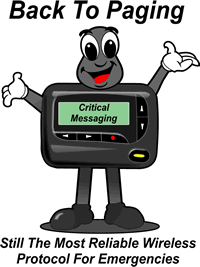


.JPG)




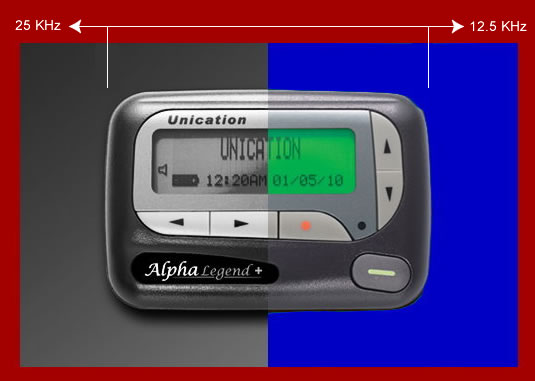






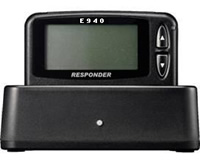


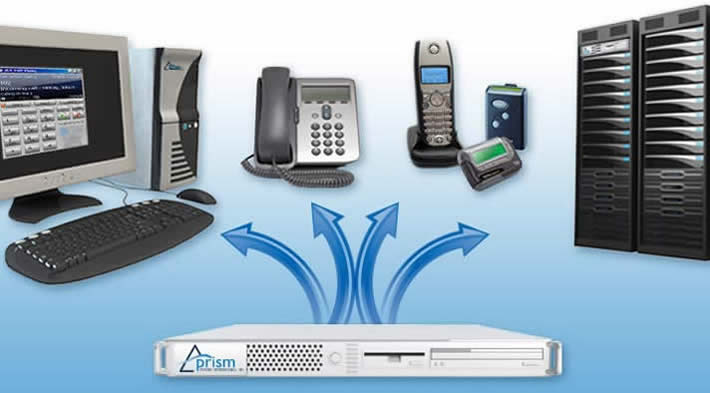

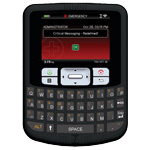

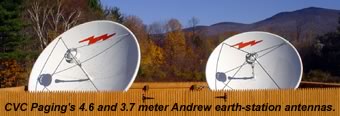







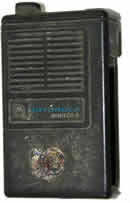
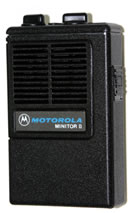

 After the 8.9 earthquake that struck near Sendai, Japan at 2:46 PM JST (0546 UTC) on Friday, March 11, the island nation is trying to recover. Soon after the earthquake — which the US Geological Survey is calling the largest to hit the island nation in 140 years — Japan has been rocked by tsunamis and power outages caused by trouble at a nuclear power station. Reports from Japan tell of phone and Internet service still up in most parts of the country. Even so, the Japan Amateur Radio League (JARL) — that country's IARU Member-Society — has asked that 7.030 MHz be kept clear for emergency use. Other reports are asking that these additional frequencies be kept clear: 3.525, 7.030, 7.077, 7.087, 7.097, 14.100, 21.200 and 28.200 MHz.
After the 8.9 earthquake that struck near Sendai, Japan at 2:46 PM JST (0546 UTC) on Friday, March 11, the island nation is trying to recover. Soon after the earthquake — which the US Geological Survey is calling the largest to hit the island nation in 140 years — Japan has been rocked by tsunamis and power outages caused by trouble at a nuclear power station. Reports from Japan tell of phone and Internet service still up in most parts of the country. Even so, the Japan Amateur Radio League (JARL) — that country's IARU Member-Society — has asked that 7.030 MHz be kept clear for emergency use. Other reports are asking that these additional frequencies be kept clear: 3.525, 7.030, 7.077, 7.087, 7.097, 14.100, 21.200 and 28.200 MHz.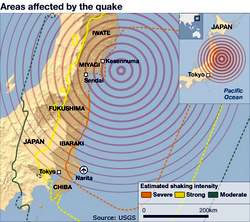
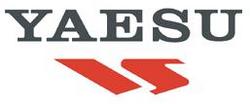 In a letter to the Amateur Radio community, Vertex Standard Chief Executive Officer and President Jun Hasegawa expressed his "sincere appreciation to all of you for your kind words and thoughts about us" after the
In a letter to the Amateur Radio community, Vertex Standard Chief Executive Officer and President Jun Hasegawa expressed his "sincere appreciation to all of you for your kind words and thoughts about us" after the  According to a
According to a  "Thankfully, our staff in Japan is safe due to earthquake preparedness and the special construction of our buildings," said Kenwood USA President Junji Kobayashi on
"Thankfully, our staff in Japan is safe due to earthquake preparedness and the special construction of our buildings," said Kenwood USA President Junji Kobayashi on


